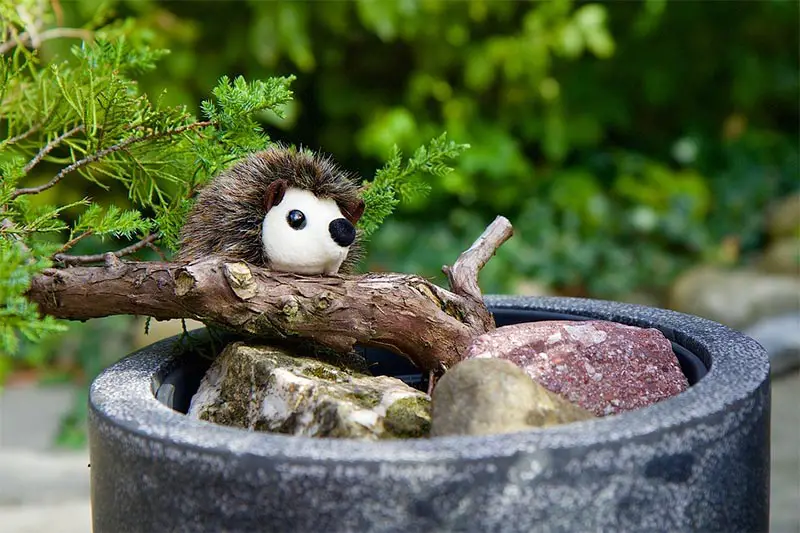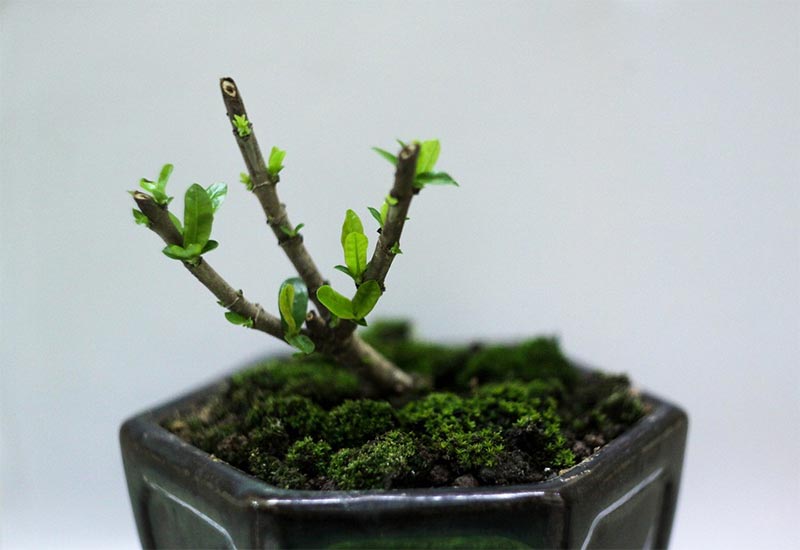How to Revive a Dead Bonsai Tree
As much as we wish it weren’t so, sometimes trees die. It’s one of the harshest lessons of bonsai and something you may come across a few times during your bonsai journey. This can be especially heartbreaking if it’s an old tree you’ve been working on for a long time.
There are many different reasons why a bonsai might die. These can range from neglect to infection and even sometimes just improper care. However, there’s still some hope. There are a few ways that you can revive a dead bonsai tree.
This article will share a few steps you can follow to try and revive your bonsai tree.
We have a detailed bonsai tree care guide with all the relevant information. Check the guide out here!

A Few Common Mistakes That Can Lead to a Dying Bonsai
Before we share how to save your bonsai, we need to go over a few reasons why your tree could be dying. This is very important as you want to know why your tree died to avoid making the same mistake in the future.
There’s a learning curve to the art of bonsai, and everyone takes the journey in their way. Some people may kill many trees along their journey, whereas others might not. The important thing is to take those lessons and use them in the future. Everyone’s journey is a little different, just like life, and that’s one of the most rewarding things about bonsai.
Let’s take a look at some of the most common mistakes that can lead to a dying bonsai.
Forgetting to Water
We all know how vital watering is. All plants need water to stay healthy and thriving. However, it can sometimes be difficult to judge just how much water your bonsai needs. The amount of water needed for a tree to remain healthy can differ from species to species. For example, a Weeping Willow will require much more water than a Baobab. It is essential to know what species your tree is and how much water they need.
Also, remember, bonsai containers are usually shallow, small containers with drainage holes. They are not like other garden pots. Trees in bonsai containers dry out faster than their counterparts in garden pots or even in the garden simply because less moisture is available.
You can see the signs of trees that haven’t been watered in their leaves. The leaves will start to droop, wilt, and eventually fall off.
Overwatering
Overwatering is another significant contributor to dead and dying bonsai. Sometimes a bonsai owner will be so focused on not forgetting to water their trees that they don’t realize they are overwatering. Most bonsai species do not like to have their roots constantly submerged. This will lead to root rot, which can travel up the tree’s trunk in very bad cases, effectively killing your bonsai.
The big problem with overwatering is that it happens slowly and gradually. By the time you realize there is a problem, it may be too late. However, as with most bonsai, the leaves can generally give you a good indication of your tree’s health.
A common sign of overwatering can be yellow and wilting leaves on your tree. However, don’t mistake this with the changing seasons’ effect on certain species that turn their leaves yellow. Yellowing leaves can also indicate other issues such as lack of nutrients, so make sure to check if your soil is wet before attributing the leaves to only one cause.
Placed in the Wrong Location
Most trees that are used in the art of bonsai are not meant to be kept indoors. As a rule of thumb, most bonsai should be kept outdoors. However, this is not always possible, and not everyone is aware of this.
Unfortunately, it does happen that people buy a beautiful little bonsai for their desk at work, and soon the tree starts dying. That’s because the indoor conditions are not optimal to sustain the trees’ health. Certain bonsai species can be kept indoors, and most others can also be kept indoors if you have a good setup with grow lights available.
The most important thing is to know what species of bonsai you have and what their requirements are. That way, you can make sure to place it in the best spot to keep the tree healthy and thriving.
Insufficient Sunlight
Plants need sunlight to grow and remain healthy. Depending on the specific bonsai species, they may require between three to six hours of sunlight every day. A safe rule of thumb is to place your bonsai in a location where they get a few hours of the morning sun and shade in the afternoon. However, make sure to check your species guide for what their requirements are.
Contrary to popular belief, it is not the UV in sunlight that plants need, which is why some bonsai can thrive in a window sill where it gets a lot of morning sun and shade in the afternoon. After all, glass blocks a lot of the UV from the sun, so if the plants needed it, they wouldn’t be able to survive at all indoors. Plants require red and blue light for development. Blue light encourages chlorophyll production, which leads to strong stems and leaves being developed. Red light is essential for germination, bulb development, root growth, flowering, and fruiting.
Rushing the Process
This is a mistake that beginners often make. You get so excited about a new bonsai that you may become over-enthusiastic. We understand this. We’ve been there. However, it could lead to a few mistakes and potentially a dead tree or two.
Sometimes when we are very excited to start work on a bonsai, we tend to rush the process. We would prune away too many leaves or roots. Sometimes we would repot at the wrong time of year just to get it into a nicer pot. We may even style the tree with wire and then a week later decide to change the style. These are very stressful for the tree, and sometimes it could just be too much, and the bonsai can die.
Remember that bonsai is a marathon, not a sprint. You have to look at it as a long-term project, something that you can enjoy for years to come. Take the process in stages and enjoy it.
Steps to Revive a Dead Bonsai
Now that we know some of the more common reasons why a bonsai might die, we can get into what you can do to try and save your tree.
Step 1: Pruning
The first thing you need to do is remove any of the dead foliage. Use sharp pruning shears and make sure to remove all dead leaves. This is so that the dead leaves do not take unnecessary energy from the tree that can better be used to save the tree.
Step 2: Check for Signs of Life
Check the areas where you removed the foliage. Check to see if the cambium, which is the growth layer of the tree, is still green. If the cambium is still green, you have a much better chance that you will be able to save the tree. If the cambium is dark or greyish, it may be too late – however, continue with the rest of the steps as the bonsai might still be hanging on.
Step 3: Prune Roots
Comb out and clean the roots carefully. Then start to trim away any roots that are dead with sharp root scissors. Dead roots are usually dark brown/black, whereas the healthy roots are lighter.
Step 4: Submerge the Roots
Submerge the roots in water so that they do not dry out while you prepare the container. You could also use a damp cloth placed gently over the entire root system.
Step 5: Prepare a Fresh Container
You could use the same container if you wash it out thoroughly. However, we’ve found that it works best if you use a bigger container, such as a garden pot, while the tree recovers. Once the plant has recovered and is healthy again, you can repot the tree into a bonsai container before the next growing season, usually late winter or early spring.
Step 6: Repot Your Dying Bonsai
Mix a healthy soil mix of nutrient-rich potting soil, sphagnum moss, and perlite, at a rate of 1: 1: 1. Fill the container one-third of the way with this recovery soil. Place your tree in the center of the pot and fill it with soil to cover all the roots. Make sure to use a chopstick or similar device to work the soil in between all the roots and crevices and fill it up with soil as needed.
Some bonsai enthusiasts prefer to place the bonsai and container in a sink with tepid water reaching just above the height of the container and waiting for the bubbles to stop rising from the container.
Step 7: Place in Ideal Location
You need to place the bonsai in the ideal location to ensure its best healing potential. You can check the species care guide for your bonsai to precisely know the requirements for the perfect location. For most bonsai, this would be in a partly shaded area that gets morning sun for at least four to six hours every day and then shade in the afternoon. The ideal location also requires good ventilation to promote good cell development.
Step 8: Water Bonsai Thoroughly
Water your bonsai with tepid or lukewarm water whenever you see the topsoil drying. Remember to give a little bit of drying time between irrigation to ensure you aren’t overwatering. There may be days where you might need to water multiple times, such as when it is very hot or even when it is very humid or windy, as these weather conditions can quickly dry out your bonsai.
Important note: Give your bonsai time to heal. It may even take a lot longer than you expect before you start seeing any actual signs of life. Some bonsai who are in recovery might only show signs of healthy life the next growing season. So be patient and keep on looking after the bonsai.

Final Thoughts
Dying trees are something that all bonsai enthusiasts face at some point during their journey. Losing a bonsai can be heartbreaking. However, don’t give up hope just yet. There may still be a way to save your miniature tree. If you follow our steps, you can give your bonsai the best chance of pulling through and regaining its vigor.







